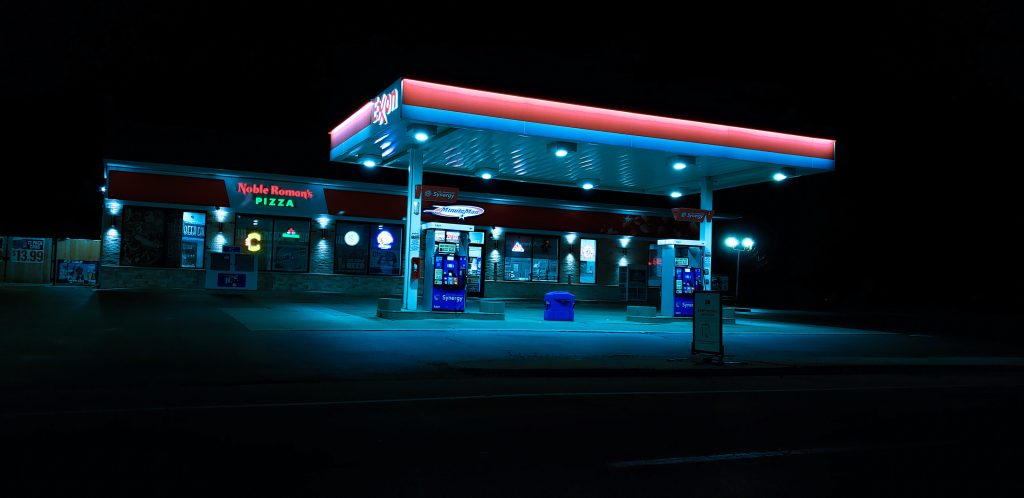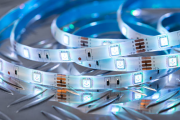1、 What is the difference between LED lights and energy-saving lights
A: Characteristics of LED
(1). Voltage: LED uses a low-voltage power supply, with a supply voltage between 6-24V. It varies depending on the product, so it is a safer power source than using high-voltage power, especially suitable for public places.
(2). Efficiency:
Energy consumption reduced by 80% compared to incandescent lamps with the same luminous efficiency.
(3). Applicability:
Very small, each unit LED chip is a 3-5mm square, so it can be prepared into various shapes devices that are suitable for variable environments.
(4). Stability:
100000 hours, with light attenuation reaching 50% of the initial value.
(5). Response time:
The response time of incandescent lamps is in milliseconds, while the response time of LED lamps is in nanoseconds.
(6). Environmental pollution: No harmful metal mercury.
B: Brightness
Candlelight=1 lumen per unit
Incandescent lamp=11-15 lumens/W
Energy saving lamp=40-60 lumens/W
LED light=80-120 lumens/W
1W LED=3W CFL (energy-saving lamp)=15W incandescent lamp
3W LED=8W CFL (energy-saving lamp)=25W incandescent lamp
4W LED=11W CFL (energy-saving lamp)=40W incandescent lamp
8W LED=15W CFL (energy-saving lamp)=75W incandescent lamp
12W LED=20W CFL (energy-saving lamp)=100W incandescent lamp
15WLED=25W CFL (energy-saving lamp)=125W incandescent lamp
2、 Comparison between LED lights and energy-saving lights
The luminous principle and advantages and disadvantages of energy-saving lights
Energy-saving lamps represent progress over incandescent lamps. Although the incandescent lamp was a groundbreaking invention by Edison that brought humanity out of darkness and into a brighter era, it consumes excessive amounts of electricity, with less than one-tenth of its energy converted to light energy, resulting in a significant waste of thermal energy. Therefore, efforts have been made to replace incandescent lamps with more efficient lighting alternatives, and energy-saving lamps have emerged as a solution to this problem, meeting the demands of our times.
It is relatively cheap and easy to make, so it has been widely used and is gradually replacing incandescent lamps.
The Luminous Principle of Energy-saving Lamps
How energy-saving lamps work: tungsten wires, mercury, and fluorescent substances
Energy-saving lamps consist of two ordinary tungsten wires as their poles. When an electric current passes through the tungsten wire, it gets heated, and electrons are emitted. By applying a relatively high voltage to both sides of the lamp tube, an electric field is formed. This electric field accelerates the electrons in the lamp tube, creating a flow of electrons with specific speed and energy. The lamp tube is filled with mercury in a vacuum.
When an energy-saving lamp is powered on, the mercury contained in the vacuum-filled tube evaporates from a liquid state into a gaseous state, resulting in free mercury atoms. As the electrons in the electron flow strike these mercury atoms at a certain speed, they get excited and become electrically charged ions in an excited state. Eventually, the excited mercury state spontaneously returns to its original state after a brief period, releasing ultraviolet radiation light. That is not suitable for illumination purposes. To overcome this, fluorescent substances are coated on the inner wall of the lamp tube.
These fluorescent substances get excited when bombarded by the ultraviolet light and emit relatively natural light, which is suitable for lighting.
The Role of Mercury in Light Sources
Energy-saving lamps available in the market include regular lamps and an increasingly popular type called the “three primary color lamps,” which shares the advantage of energy efficiency with incandescent bulbs. However, unlike incandescent bulbs, the color rendering of ordinary lamps is relatively low, while the three primary color lamps exhibit a natural and sunlight-like color. In terms of color rendering and light efficiency, three primary color lamps are better than ordinary light tubes. It is evident that mercury plays a significant role in energy-saving lamps as a mediator. And without mercury, energy-saving lamps cannot emit light.
There is very little mercury in each lamp tube.
As per research, a fluorescent lamp with a thick diameter of 36 millimeters has a mercury content of 25-45 milligrams, whereas a lamp with a diameter of 26 millimeters has a mercury content of 20 milligrams. A compact fluorescent lamp with a diameter of 10 millimeters has a mercury content of 10 milligrams per gram. At room temperature, mercury is in a liquid state and appears as a flowable silver-white metal. In fluorescent tubes, mercury is discharged as a gas and acts as a medium to not only enhance the lamp’s light efficiency but also diversify the variety of light sources.
Consequently, all energy-saving light sources contain mercury. Due to its low boiling point, mercury can evaporate at room temperature, leading to its instant release into the surrounding air when a waste fluorescent tube is broken. This sudden release can increase the concentration of mercury in the surrounding air to 10-20 milligrams per cubic meter.
What are the drawbacks of energy-saving lamps
Mercury pollution can occur during the production process and after disposal of energy-saving lamps. Nowadays, several countries attach significant importance to mercury pollution, and the general public is becoming increasingly aware of its hazards. However, energy-saving lamps pose several challenges as they are fragile, challenging to transport and install due to their glass material. Despite being energy-saving, their power consumption remains relatively high, leading to the popular phrase, “easy to damage, short lifespan, energy-saving without saving money,” which accurately portrays their limitations.
What are the advantages of LED lights
Energy saving
Compared to incandescent lamps, white LED consumes only 1/10 of the energy, and 1/4 of the energy consumption of energy-saving lamps. Moreover, it boasts a long lifespan that can last for over 100000 hours. This makes it a one-time investment for ordinary household lighting. Additionally, white LED can work at high speed, unlike energy-saving lamps, whose filaments turn black and breakdown quickly when frequently started or turned off.
Solid-state packaging is a type of cold light source, which makes it highly convenient for transportation and installation. It can be easily installed in any small or enclosed equipment. Solid-state packaging is resistant to vibrations and does not require significant heat dissipation, making it an ideal choice for various applications.
The advancements in LED technology are progressing at a rapid pace, leading to remarkable breakthroughs in luminous efficiency and continuous price reductions. The era of white LED lighting entering households is rapidly approaching. LED lights are environmentally friendly and do not contain any harmful substances such as mercury. The assembly components of LED lights can be easily disassembled and assembled without the need for manufacturers to return them. So recycling becomes an easy process for others.
3. The difference between LED lights and regular lighting, and why LED lights are more energy-efficient
principle of light emission
LED lamps are a type of semiconductor lighting, while ordinary lamps encompass incandescent lamps, halogen lamps, and energy-saving lamps. As the future of lighting, what sets LED lights apart from regular lights in terms of their source of light and energy efficiency?
The primary difference between LED lamps and ordinary lamps (such as incandescent, halogen, and energy-saving lamps) lies in the principle of light emission. Ordinary light bulbs convert electrical energy into thermal energy, which is then excited into light energy, resulting in a significant waste of energy during the conversion process. In contrast, LED lights convert electrical energy directly into light energy, resulting in a much more efficient use of energy. This fundamental difference in energy conversion is what makes LED lighting more energy-efficient than other types of lighting.
In addition, the difference and energy-saving situation between LED lights and ordinary lights can also be distinguished in terms of effectiveness:
luminous flux
The measurement of luminous flux is given in lumens (lm). Halogen lamps typically have a luminous flux of 20 lm/W, while energy-saving lamps typically have a luminous flux of 50-60 lm/W. On the other hand, LED lights have a luminous flux of 80-120 lm/W. This indicates that the total amount of light produced per watt by different light sources varies greatly, which is a significant factor in determining their energy-saving efficiency.
Luminous efficiency (luminous efficiency). Halogen lighting efficiency is generally around 30%, energy-saving lamps are generally around 60%, and LED The lighting efficiency can reach 90%, which is also a major factor reflecting energy-saving.
Based on the differences described above, it is evident that the luminous flux of LED lamps is more than double that of energy-saving lamps and five times greater than incandescent lamps. This implies that a 50W LED lamp can replace a 110W energy-saving lamp and a 250W halogen lamp. LED lights are thus more energy-efficient than traditional lighting options. Consequently, LED lights are poised to become the next-generation lighting fixtures that replace conventional lighting.




